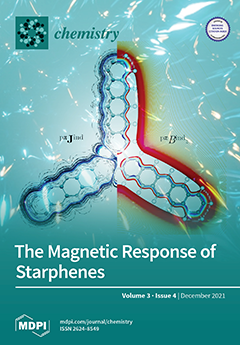There is a demand for renewable resources, such as biomass, to produce compounds considered as platform molecules. This study deals with dehydration of fructose for the formation of 5-hydroxymethylfurfural (HMF), a feedstock molecule. Different catalysts (aluminosilicates, niobic acid, 12-tungstophosphoric acid—HPW, and supported HPW/Niobia)
[...] Read more.
There is a demand for renewable resources, such as biomass, to produce compounds considered as platform molecules. This study deals with dehydration of fructose for the formation of 5-hydroxymethylfurfural (HMF), a feedstock molecule. Different catalysts (aluminosilicates, niobic acid, 12-tungstophosphoric acid—HPW, and supported HPW/Niobia) were studied for this reaction in an aqueous medium. The catalysts were characterized by XRD, FT-IR, N
2 sorption at −196 °C and pyridine adsorption. It was evident that the nature of the sites (Brønsted and Lewis), strength, quantity and accessibility to the acidic sites are critical to the conversion and yield results. A synergic effect of acidity and mesoporous area are key factors affecting the activity and selectivity of the solid acids. Niobic acid (Nb
2O
5·nH
2O) revealed the best efficiency (highest TON, yield, selectivity and conversion). It was determined that the optimum acidity strength of catalysts should be between 80 to 100 kJ mol
−1, with about 0.20 to 0.30 mmol g
−1 of acid sites, density about 1 site nm
−2 and mesoporous area about 100 m
2 g
−1. These values fit well within the general order of the observed selectivity (i.e., Nb
2O
5 > HZSM-5 > 20%HPW/Nb
2O
5 > SiO
2-Al
2O
3 > HY > HBEA).
Full article





